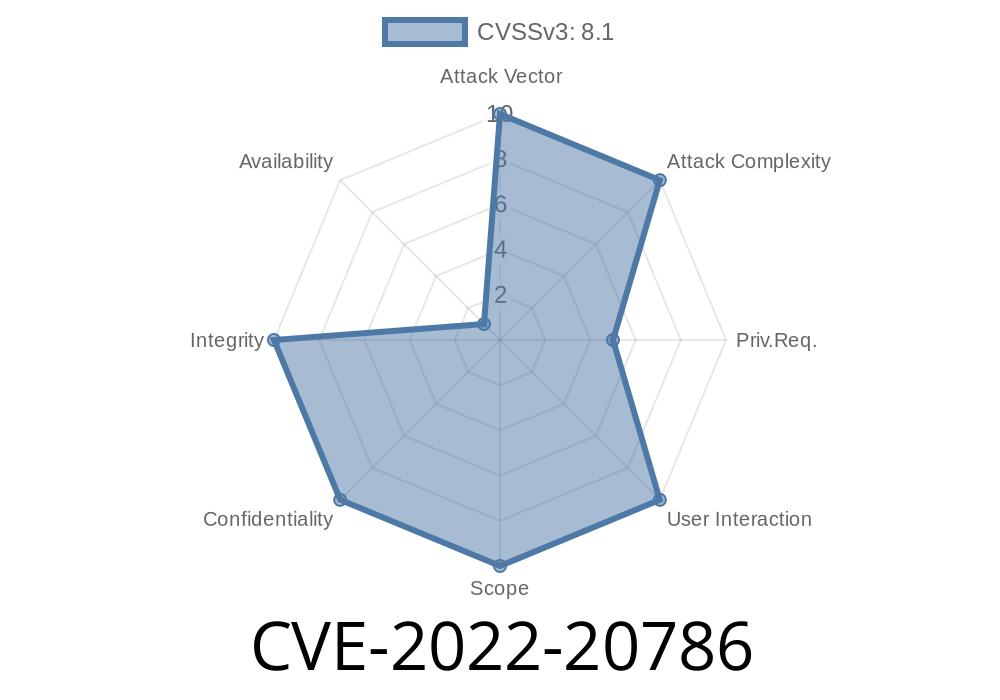A recently discovered critical vulnerability, identified as CVE-2022-20786, was found in the web-based management interface of the popular Cisco Unified Communications Manager IM & Presence Service (Unified CM IM&P). This vulnerability could potentially allow an authenticated, remote attacker to conduct SQL injection attacks on an affected system. In this article, we will dive into the details of this vulnerability, understand how an attacker could exploit it, and provide recommendations to mitigate the risk.
Vulnerability Details
The root cause of this vulnerability, CVE-2022-20786, lies in the improper validation of user-submitted parameters when handling SQL queries in the web-based management interface of Cisco Unified Communications Manager IM & Presence Service (Unified CM IM&P). Consequently, an attacker could exploit this vulnerability by authenticating to the application and sending malicious SQL requests to the targeted system. A successful exploit could enable the attacker to obtain or modify data stored in the underlying database of the affected system.
Attack Scenario
In order to exploit this vulnerability, an attacker would first need to authenticate themselves to the web-based management interface of the affected Cisco Unified Communications Manager IM & Presence Service (Unified CM IM&P). Once authenticated, the attacker could craft and send malicious SQL requests to the targeted system. A simple example of a malicious SQL request is shown below:
SELECT * FROM users WHERE username='admin' AND password='password' OR 1=1 -- '
In this example, the attacker injects OR 1=1 -- into the SQL query, causing the system to return all records from the 'users' table. The double hyphen -- comments out the remainder of the query to ensure its execution. Given the right set of conditions and sufficient access privileges, an attacker could exfiltrate sensitive information or modify data inside the affected system's database.
Original References
For more information on this vulnerability, you may refer to the original Cisco Advisory on CVE-2022-20786:
- Cisco Security Advisory
Mitigation Steps
To mitigate the risk of this vulnerability, it is essential to apply the appropriate patches provided by Cisco for the affected versions of Cisco Unified Communications Manager IM & Presence Service (Unified CM IM&P). You can find information on these patches in the original Cisco Advisory mentioned above.
Aside from applying the necessary patches, you can also implement the following recommendations to further secure your Cisco Unified Communications Manager IM & Presence Service environment:
Regularly monitor logs to detect any suspicious activity or unauthorized access attempts.
4. Employ the principle of least privilege, granting users the minimum access required to perform their tasks.
Conclusion
The discovery of CVE-2022-20786 highlights the importance of proper input validation and secure coding practices in web application development. By understanding the details and exploit methods related to this vulnerability and applying the recommended mitigation steps, you can significantly reduce the risk of your Cisco Unified Communications Manager IM & Presence Service environment being compromised. Stay vigilant, stay informed, and stay secure.
Timeline
Published on: 04/21/2022 19:15:00 UTC
Last modified on: 05/04/2022 18:13:00 UTC
